A great alternative to a bread, these traditional Irish potato farls are easy to make on a frying pan.
Do you remember me waxing lyrical about the best ever Irish breakfast I ever had in Cork?
Well, apart from the delicious potato omelette, there were also these square flat breads called ‘Farls’, which also tasted great.
At the time I didn’t know they were made mainly from potatoes and fried instead of ‘baked’ like a traditional bread recipes.
When I came back, I wanted to re-create some of the recipes that I ate during my travels and this traditional Irish potato bread is my next recipe.
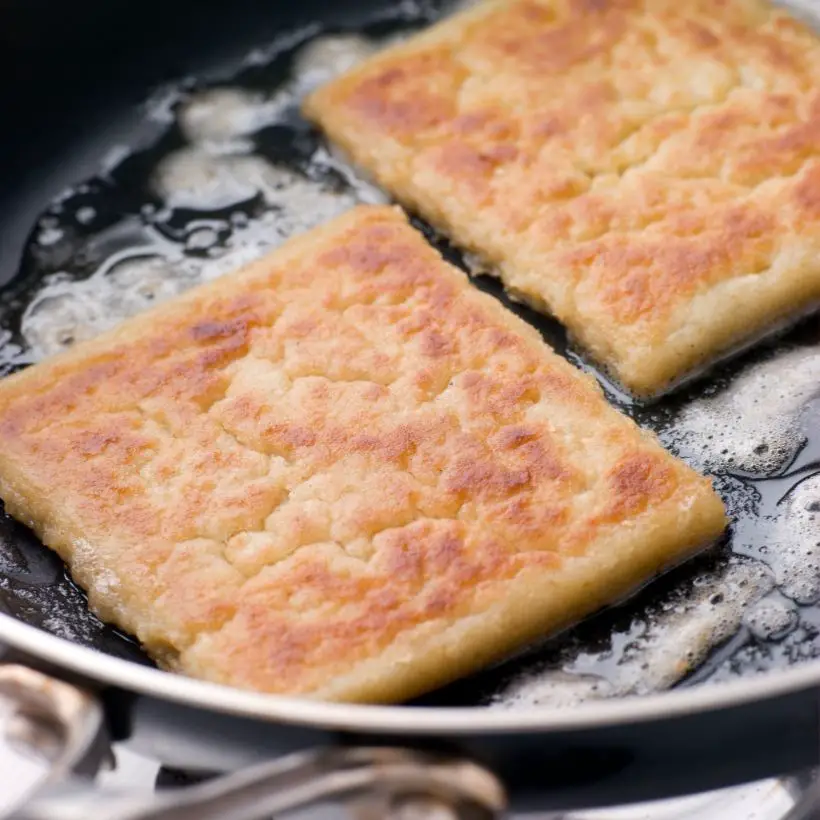
MORE RECIPES FOR YOU TO TRY
- Dinner Rolls (Quick Biscuits with no milk or eggs) >>
- Traditional Irish Wholemeal Soda Bread >>
- Easy Rye Bread (no-knead) >>
What are Irish potato farls?
Irish potato farls have a fascinating background history. The name ‘farl’ comes originally from Scotland and means ‘a quarter’. Traditionally, this potato-based bread would be baked (fried) on a skillet or heavy-bottomed pan.
You would roll out the dough and once in a skillet you would divide it to 4 quarters, which made it easier to turn around and to share with your family.
Or maybe it was also about everyone getting a fair share of the potato bread, as this was a food of the working classes and there was never enough of bread.
I was also interested to find out that because Ireland’s weather climate wasn’t particularly good for growing wheat suitable for making yeasted bread.
Most wheats that were successfully grown in Ireland had a significantly lower amount of gluten than for example wheat flours grown in Canada (which is famous for it’s extra strong gluten flour).
This ment that the flour (very similar to plain or all-purpose flour) could be baked with just a soda (or baking powder) and didn’t required yeast to rise.
Baking bread or rolls was much quicker and easier as people didn’t need an oven to bake their bread and managed with a skilled over an open fire or a large pot with a lid for soda bread.
The potato addition to this traditional bread is also quite self-explanatory. At one point, potatoes were plentiful, cheap and grown pretty much everywhere in Ireland.
Flour was still more expensive than potatoes (and more complex to process and prepare), so potatoes made the bread to go much further.
The traditional soda bread (as we know it now) wasn’t as popular as the potato farls before 1845.
But in the middle of 19 century, Ireland’s potato crop was damaged by potato blight and people had to think about a different alternative for their bread.
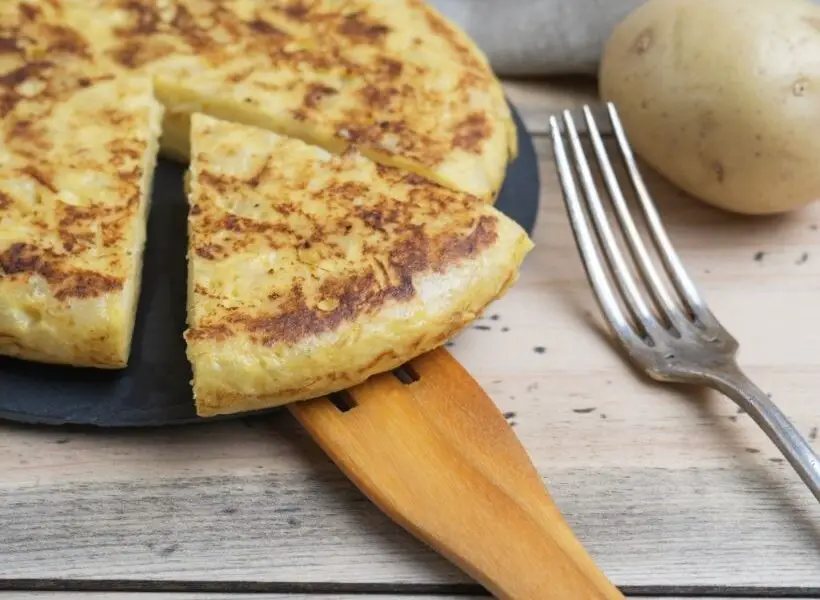
Few tips on making this recipe
Use leftover potatoes for this bread, it’s a great way of using them up
The recipe says ‘fry’ the potato farls, but try to fry them with as little oil as possible. They ment to be pretty much ‘dry fried – baked’ on the skillet or griddle.
The amount of flour will very much depends on the type of potatoes you have. If your potatoes are very wet, they will need more flour (or use less potatoes).
The best way to know that your dough is ready is when the dough is fairly firm and doesn’t stick to your hands too much.
I’ve used plain (all purpose) flour with this recipe, but you can use self-raising flour. Just make sure you leave out the baking powder and the baking soda.
Ingredients shopping list
- potatoes
- butter
- plain flour
- baking powder
- baking soda
- salt
How to make Irish potato bread – Traditional Farls recipe
Heat a flat griddle, skillet or a frying pan on medium-heat.
Mixed potatoes with the flour, baking powder, soda and salt.
Crumble in the butter and mix everything until it forms a dough. Add more or less flour if your potatoes are dry or liquid. You should end up with a fairly firm dough.
Bring the dough together and roll out on a lightly oiled kithen surface to a rectangle that’s about 1 cm thick.
Cut the dough into squares or if you prefer you could roll out the dough to a round shape and cut into 4 parts.
Make sure that your pan is ready and nicely hot. Lightly greese it with oil and place the first potato farls on.
Bake about 4 minutes on each side, they should be nice and golden in colour. If they are turning brown too quickly, turn down your heat.
How to make traditional potato farls gluten free
Since potatoes are naturally gluten free, it’s pretty easy to make this recipe completely gluten free.
Simply swap the flour amount for gluten free flour and add 1 teaspoon of xantham gum to the recipe. The xantham gum will make sure that your potato farls are not going to fall apart when you fry them!
How to serve traditional fried potato bread
Eat hot and serve instead of bread with your traditional Irish breakfast or any savoury type of breakfast.
Since potato farls are already fried, you wouldn’t toast them like with a regular bread. Instead you would eat them with bacon, eggs, sausages, beans or other breakfast ingredients.
Potato farls are also good cold and you can easily take them as a snack for work or a walk in the countryside.
It’s a bit tricky to use them instead of regular bread for making sandwiches, but you can certainly add different spreads on top and eat them as an ‘open sandwich.
How to keep traditional fried potato bread
I usually keep my potato farls in the fridge covered in a suitable container and they last for about 3 days.
Can you freeze Irish potato farls ?
Yes, the potato farls freeze well, although they can be a little soft in texture when defrost them. You can keep them in the freezer for up to 6 months.
Freeze the potato farls on the same day as you’ve made them, making sure they are completely cold before freezing them.
Depending on how many you have, you want to make sure that you freeze them first on their own. Lay them on a tray with greaseproof paper first and then place in the freezer.
Once completely frozen, stack them up in the freezer proof plastic container, in between greaseproof pieces of paper. This will prevent them from sticking together.
To defrost your traditional Irish potato flat breads, take them out the night before and leave to defrost in the fridge overnight.
They can be eaten cold, but they are much better warmed up. You can warm up the potato farls in the microwave (10 sec) or oven (180C 350 F for 5 minutes).

Irish potato bread – Traditional farls
Ingredients
- 400 grams potatoes cooked, baked or boiled
- 50 grams butter
- 120 grams plain flour
- 1 teaspoon baking powder
- 1/2 teaspoon baking soda
- 1/4 teaspoon salt
Instructions
- Heat a flat griddle, skillet or a frying pan on medium-heat.
- Mixed potatoes with the flour, baking powder, soda and salt.
- Crumble in the butter and mix everything until it forms a dough. Add more or less flour if your potatoes are dry or liquid. You should end up with a fairly firm dough.
- Bring the dough together and roll out on a lightly oiled kithen surface to a rectangle that's about 1 cm thick.
- Cut the dough into squares or if you prefer you could roll out the dough to a round shape and cut into 4 parts.
- Make sure that your pan is ready and nicely hot. Lightly greese it with oil and place the first potato farls on.
- Bake about 4 minutes on each side, they should be nice and golden in colour. If they are turning brown too quickly, turn down your heat.
- Eat hot and serve instead of bread with your traditional Irish breakfast.


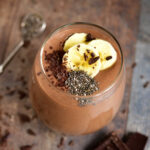
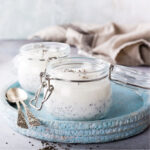
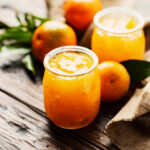
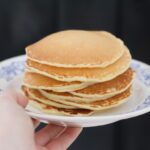


Leave a Reply